Would a Helium Balloon Float on the Moon?
This week we hear how lasers might replace X-rays as a way to see inside the body, we delve into the genetic code of the extinct woolly mammoth and hear about a government competition to exploit the power of the web to help people to find public toilets and post boxes. We also tackle your science questions including finding out why mosquiotoes don't transmit diseases like dirty needles, how animals cut their umbilical cords, whether it's better to drink red wine or grape juice and why cold tea tastes strange! Plus, Dave creates a ghostly one-way window effect in Kitchen science.
In this episode

- What do hospitals do with amputated tissue?
What do hospitals do with amputated tissue?
Kat - In the UK human tissue is regulated by the human tissue authority so there are quite a lot of rules about how you'd have to dispose of it. With some things that are taken off people you may be offered them to take them home, if you'd like to. Most things you probably don't want your diseased leg back. It depends what was wrong with the part of you that has been taken off. For example, it may be sent down to the pathology lab so it can be cut up. You can look at it, you can see what was wrong with it. In some cases with the consent of the person whose tissue it was it may be for research. This happens for things like cancers. We try and bank them so we can study them in the future. There's been quite a lot of things in the news, not so much recently, about people's organs being stored without consent. If you don't consent to research and they don't want it, you don't want it it'll probably just be destroyed. Usually by incineration. Here in the UK a lot of this disposal is contracted out to companies that take all the nasty body bits and tissue away and burn it somewhere.

Laser sees straight through you
 US scientists have developed a new way to image tissue in unprecedented detail but without resorting to harmful X-rays. Harvard researcher Mark Niedre and his colleagues, writing in this week's PNAS, describe how they have used short bursts of very intense laser light to produce three-dimensional images of mice, including animals with lung tumours. Previous attempts to use laser or visible light to image tissues has been frustrated by light scattering as it passes through the tissue, "rather like when you stick your thumb over a torch bulb and your entire finger glows red," says Niedre. This is because the photons (light particles) bounce about like a bullet ricocheting around a room as they pass through, and this produces a blurry image.
US scientists have developed a new way to image tissue in unprecedented detail but without resorting to harmful X-rays. Harvard researcher Mark Niedre and his colleagues, writing in this week's PNAS, describe how they have used short bursts of very intense laser light to produce three-dimensional images of mice, including animals with lung tumours. Previous attempts to use laser or visible light to image tissues has been frustrated by light scattering as it passes through the tissue, "rather like when you stick your thumb over a torch bulb and your entire finger glows red," says Niedre. This is because the photons (light particles) bounce about like a bullet ricocheting around a room as they pass through, and this produces a blurry image.
But the Harvard team have solved the problem by using ultrashort (picosecond) bursts of near-infrared laser light (which penetrates tissues very well), and recording only the first photons to pass through. This is because the photons that pass through the tissue the most quickly must have taken the shortest path and therefore been deflected the least. The team have even gone one step further and demonstrated that this technique, known as EPT or early-photon tomography can also be used to give biochemical clues about the nature of the tissue under scrutiny.
By injecting mice that had lung cancers with antibodies designed to glow in the presence of tumour tissue the team were able to pick up not just the location of the tumour but also reactive changes in the adjacent tissue. Significantly this adjacent tissue had previously looked normal when examined by CT scan. "We're able to image tissues at sub-millimetre resolutions and with the use of molecules like the antibodies we used in these experiments we can begin to find out important biochemical details about the tissues we're looking at; that's what makes this work so exciting," says Niedre.
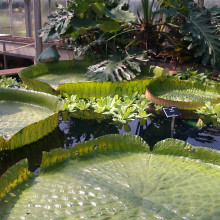
Ponds going down the pan
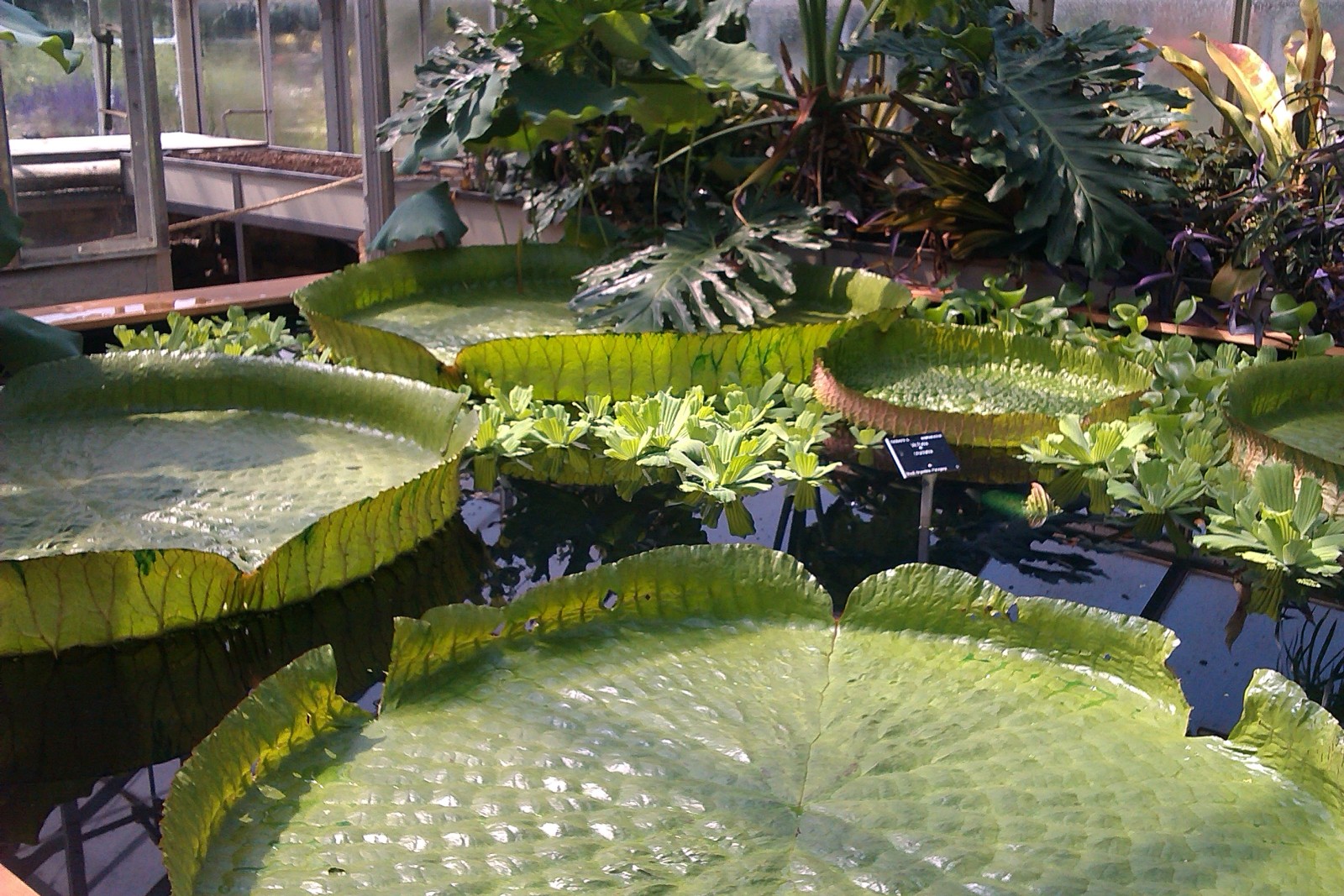 A national survey of the countryside has shown that good quality ponds have vanished from many parts of the countryside, although there's actually more ponds in numerical terms. And this could spell disaster for wildlife.
A national survey of the countryside has shown that good quality ponds have vanished from many parts of the countryside, although there's actually more ponds in numerical terms. And this could spell disaster for wildlife.
The Centre for Ecology and Hydrology carry out a Countryside Survey in the UK every ten years, commissioned by Defra and the Natural Environment Research Council, and this one is the world's first national survey of the condition of ponds.
The results show that although the number of ponds in Britain has gone up by 11% since 1998, only 8% of them are currently in good condition, and that the quality of ponds went down between 1996 and 2007.
According to Dr Jeremy Biggs, Director of Policy and Research at the charity Pond Conservation, although ponds may seem insignificant compared to rivers and lakes, ponds have at least as much variety of wildlife, and provide a refuge for many endangered plants and animals. Many rare and delicate freshwater plants and animals depend on ponds, so the fall in quality ponds could be serious.
Although it's positive that the number of ponds in the UK has increased, we don't know how many of them will provide clean, unpolluted water for wildlife. Pond Conservation are coordinating a major Million Ponds Project to bring nice clean ponds back, and to start with they're planning on making 5,000 new ponds over the next four years.
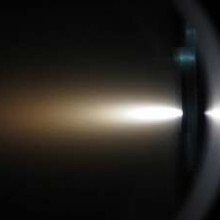
Super slippery material
If you are making a machine with moving parts you often want to make parts slide past each other efficiently. Normally this is achieved by covering the parts with oil or another lubricant which can significantly reduce the friction but this isn't that effective, and the lubricant can escape. There are also a variety of low friction coatings such as Teflon, which you can find on non-stick frying pans, and have been used to slide whole motorway slip roads around. However these are very soft and wouldn't last five minutes on a gear wheel.
Scientists from the Ames Laboratory in the US may have accidently discovered a material which could solve this problem. They were searching for a material to generate power when you heat one side, and one of the materials they tried was Aluminium Magnesium Boride (AlMgB14) this didn't work for what they were testing it on, and it  was extreemly difficult to cut and polish. Instead of being frustrated by this they investigated more closely and tried mixing it with titanium boride and found that it was extreemly hard, the third hardest material found so far after diamond and Carbon Boron Nitride, so it should be hard wearing. They also looked into how slippery it is and it seems to have a coefficient of friction of 0.02 that means that if you pushed down with 100N you would only have to push with 2N to be able to slide. In comparison teflon is more than twice as sticky so you would have to push with 5N and lubricated steel is 8 times stickier.
was extreemly difficult to cut and polish. Instead of being frustrated by this they investigated more closely and tried mixing it with titanium boride and found that it was extreemly hard, the third hardest material found so far after diamond and Carbon Boron Nitride, so it should be hard wearing. They also looked into how slippery it is and it seems to have a coefficient of friction of 0.02 that means that if you pushed down with 100N you would only have to push with 2N to be able to slide. In comparison teflon is more than twice as sticky so you would have to push with 5N and lubricated steel is 8 times stickier.
At the moment the material is expensive and difficult to produce, but if you just applied the coating to all the pump blades in the US the reduction in friction would save over 100 million pounds a year in reduced energy costs.

Hearing the Light
A breakthrough in the way laser light interacts with nerve cells could greatly improve the quality of hearing for people who require cochlea implants.
 A healthy inner ear contains many thousands of hair-like cells which detect sound and pass a signal on to nerve cells, which then transport the signal to the brain to be de-coded. Damage to these cells as a result of illness, accident or just genetic defects can result in deafness. A cochlear implant takes the place of these cells, communicating directly with the nerve cells so someone who was formerly deaf can hear, and presently, cochlear implants are very effective - deaf children with implants can develop speech that is very close to that of hearing children.
A healthy inner ear contains many thousands of hair-like cells which detect sound and pass a signal on to nerve cells, which then transport the signal to the brain to be de-coded. Damage to these cells as a result of illness, accident or just genetic defects can result in deafness. A cochlear implant takes the place of these cells, communicating directly with the nerve cells so someone who was formerly deaf can hear, and presently, cochlear implants are very effective - deaf children with implants can develop speech that is very close to that of hearing children.
However, cochlea implants use about 20 electrodes to connect to nerves, which is very few compared with the 3000 or more hair cells in a healthy ear - this means that an implant will certainly improve hearing, but the hearing will still be poor, and many people with implants do not enjoy music and find it difficult to converse in noisy environments. Due to the way that tissue conducts electricity, you can't just increase the number of electrodes, as they will interferre with each other and reduce the overall quality, for many years, this has put a limit on the quality of cochlear implants.
But now, a team from Northwestern University in Chicago, led by Claus-Peter Richter, have announced at the Medical-Bionics conference in Victoria, Australia that they may have a way to shine some light upon the problem - infrared laser light to be precise.
For reasons that are not yet fully understood - laser light will simulate neurons - even though they do not contain light-sensitive proteins. Richter's team decided to see if this would be a better way of communicating with neurons in the inner ear, and knowing that the laser would not spread through the tissue as an electric pulse would, lasers could be a way to achieve much higher definition for implants. They tested this by shining a laser of infra-red light onto the neurons in the inner ear of deaf guinea pigs, while monitoring the electrical activity in a region of the brain responsible for passing information from the ears to the brain cortex, called the inferior colliculus.
Not only did the lasers register a signal which shows that the deaf guinea pigs could hear - but the brain activity was very similar to that seen in hearing guinea pigs - suggesting that implants using lasers may be able to restore hearing completely!
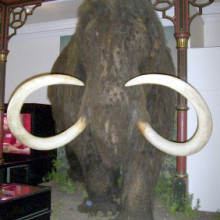
Woolly mammoths reveal genetic secrets
 Scientists at Penn State University have made a giant leap, or should that be a slow lumber, forward in genetic research by sequencing the genome of the woolly mammoth. The team sequenced four billion bases, or letters, of DNA using the latest technology, and a new approach to read very old DNA - they also did it relatively cheaply. This is 100 times more data than for any other extinct species, although only around three and a half billion are actually mammoth, while the rest probably belong to contaminating bacteria or fungi. The researchers think the mammoth's genome is about the same size as that of the modern-day African elephant, which they used to figure out which of the DNA letters were likely to be mammoth, and which were contamination.
Scientists at Penn State University have made a giant leap, or should that be a slow lumber, forward in genetic research by sequencing the genome of the woolly mammoth. The team sequenced four billion bases, or letters, of DNA using the latest technology, and a new approach to read very old DNA - they also did it relatively cheaply. This is 100 times more data than for any other extinct species, although only around three and a half billion are actually mammoth, while the rest probably belong to contaminating bacteria or fungi. The researchers think the mammoth's genome is about the same size as that of the modern-day African elephant, which they used to figure out which of the DNA letters were likely to be mammoth, and which were contamination.
The scientists used DNA extracted from hair taken from a mammoth mummy that had been buried in the Siberian permafrost for 20,000 years, and another mummy that was 60,000 years old. The team used hair to try and avoid contamination problems, as it's easier to remove bacteria and fungi from hair than flesh. And hair also preserves the structure of ancient DNA better than bones, as the sturdy hair proteins encase and protect the DNA almost like plastic wrap.
By comparing the mammoth sequence to that of modern-day elephants, the researchers think that mammoths and their modern relatives separated around six-million years ago, about the same time that humans and chimpanzees separated. But unlike humans and chimps, which relatively rapidly evolved into two distinct species, mammoths and elephants evolved at a more gradual pace.
The team also found that woolly mammoths had a relatively low genetic diversity, meaning that all animals are quite similar, even those that were older. The data could also explain why mammoths went extinct - which might be useful to help currently surviving species that are on the brink of extinction. The researchers are also hoping to find the genes that could explain how mammoths survived in such cold environments. And it's another step on the way to potentially bring the woolly mammoth back to life, especially after the recent successes in cloning a mouse that had been frozen.
Reference: Miller, W et al (2008). Sequencing the nuclear genome of the extinct woolly mammoth Nature, 456 (7220), 387-390
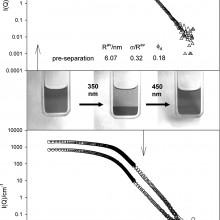
Switchable surfactants
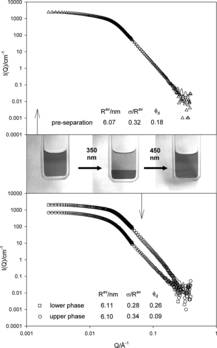 It is often said that oil and water don't mix, but if you have ever done any washing up you will know that you can make them mix by adding a detergent, which allows the water to dissolve all those stubbon stains. This sort of thing is often done in chemistry, possibly to allow some catalytic nanoparticles to a liquid they wouldn't normally dissolve in. This means that they can catalyse a reaction. The problem is then retrieving your expensive nanoparticles, because once you have made them mix really well stopping them is difficult. Normally this is done by using expensive centrifuges, spinning the mixture and causing the denser nanoparticles to sink to the bottom.
It is often said that oil and water don't mix, but if you have ever done any washing up you will know that you can make them mix by adding a detergent, which allows the water to dissolve all those stubbon stains. This sort of thing is often done in chemistry, possibly to allow some catalytic nanoparticles to a liquid they wouldn't normally dissolve in. This means that they can catalyse a reaction. The problem is then retrieving your expensive nanoparticles, because once you have made them mix really well stopping them is difficult. Normally this is done by using expensive centrifuges, spinning the mixture and causing the denser nanoparticles to sink to the bottom.
But Chemists based in the University of Bristol have developed a chemical which could do this. Normally it works like a detergent allowing droplets of water to dissolve in oil but if you shine ultra violet light onto it suddenly it ceases to be a detergent and dissolves in water again. The water droplets are now insoluble and will clump together and become easy to seperate again.
The chemical is a normal surfactant molecule which they have added
azobenzene to, which will put a kink into the molecule when exposed to ultra violet light changing its properties.
The really elegant feature is that if you illuminate it with visible light, the surfactant goes back to its original shape and properties and starts to work again, so you can recycle your nano particles again and again.
Why can’t mosquitoes transmit diseases like dirty needles?
Chris - The thing we know mosquitoes are very good at transmitting is malaria. The way in which they transmit malaria is that people who have malaria are made more susceptible and they're more attractive to mosquitoes in the first place. The mosquito flies in, bites the person who is infectious for malaria. The malaria parasite - plasmodium - then gets inside the body of the mosquito where it infects the gut cells of the mosquito and grows or replicates in there. This means that from a very small infected dose you get a very big dose inside the mosquito. The mosquito then goes and feeds on a second human who isn't infected with malaria. In the course of feeding the mosquito injects some of its saliva into the person which acts as an anticoagulant and also as an immunosuppressant so the person's immune system doesn't attack the mosquito while it's feeding. In the course of injecting that saliva it now injects some of those malarial parasites which are inside it, now at very high levels, into the person. That's how the person catches malaria. Kat - What about things like viruses and HIV?
Chris - With HIV the problem is that it's not infectious but when it comes to a mosquito the problem for HIV is that it can't infect the mosquito. A person who has HIV doesn't actually have very much virus going around in the bloodstream until the latter stages of the disease when they've got AIDS or right at the very first part of the disease. The amount of virus taken into the mosquito is very low. When the virus gets into the mosquito it gets broken down or destroyed by the mosquito's digestive juices. It's not adapted to infecting or persisting inside the mosquito. When that mosquito bites another person the amount of virus that's in there is vanishingly small, if not zero. Therefore the amount that gets put back into the next person that gets bitten is absolutely tiny. As a result the next person doesn't get infected. That's very useful and very fortunate because with 30 million people on Earth (or more) infected with HIV, if it could spread that way, it would be a major problem. Malaria affects about 3-5 hundred million people every year.
How do water tablets reduce blood pressure?
Kat - I'm assuming these are tablets which would make you wee more which would reduce your blood pressure. What do you think?
Chris - Yes. The simplest way to think about it is that when you take your diuretic, in other words something that makes your body lose water (that's what water tablets are), then you're reducing the volume of water in the body. Therefore you're reducing the volume of water inside your blood vessels. Blood vessels are a fixed size and the more water which you put inside them, which is in your blood, then the more stretched they are and therefore the higher the pressure because liquids are incompressible. If you lose water from the body then this means that there's less fluid in the vessels and, as a result, the pressure is a bit lower. That's probably an oversimplification. There's probably more to it than that. We know that some of these blood pressure tablets have other effects which affect metabolism and also affect the amount of sodium in the body. That's principally how they work. Put simply, it's because you're reducing the volume of liquid inside a sealed container and if you take some liquid out then the amount of stretch, the pressure in the blood vessels must go down.
Are there health differences between red wine and red grape juice?
Kat - This is a great one because everyone wants to know, 'can I drink red wine and will it prevent cancer?' The answer is yes there are chemical differences between grape juice and wine, the main one being the presence of alcohol. There are physiological differences between drinking and the main thing is that alcohol is a very effective solvent A lot of the sort of biological chemicals that may be found in wine can be dissolved into fat using alcohol. That's why it's a great solvent. You'll probably be able to get more chemicals into your body by drinking wine and this is actually why if you smoke and drink at the same time you'll actually do yourself a lot more harm than if you just smoke or just drank alcohol. Alcohol does help all these nasty chemicals pass into your body much more easily. In terms of the absolute health benefits of what's in red wine the main culprit is called reveratrol and tabloids get very excited about this and say, "Red wine you should all drink this!" Resveratrol is a really interesting molecule and organisations like Cancer Research UK are investigating it to see if it can prevent cancer. The amount that you get in the average bottle of red wine is actually relatively small. A scientist told me before that you would have to drink hundreds of bottles of red wine a day to actually get enough resveratrol to have an effect. I think the actual differences are quite minimal between grape juice and wine in terms of health benefits. We're actually investigating resveratrol as a more - you purify the chemical and give it to people that way. In terms of alcohol health benefits the research has shown that there's benefits for heart type things: cardiovascular disease. In a very small group of people - and this is basically men over the age of 50 and women over menopause who drink one unit of alcohol per day [there may be health benefits]. But then alcohol does cause heart disease and strokes if you drink in reasonably large amounts. If you really want health benefits you're best sticking to the grape juice. Chris - There's one other chemical in red wine which we should mention and that's procyanadin. Roger Corder is a researcher at the London Hospital Medical College and St Bartholomew's Medical College in London and he actually found out how this worked. You can find lots of procyanadin in tannat grapes which are in southwest France. So some of the grapes that grow at very high altitude. The reason you find that is because it's an antioxidant molecule and it helps to protect the grapes from ultraviolet. If you put it into your body what Roger Corder found is that it helps to relax blood vessels. This is present in sufficiently high quantities in red wine that you would have at therapeutic levels, i.e. a glass at dinner. It will cause a reduction in things like blood pressure and heart disease and stroke risk. If you go and buy red wine look from tannat grapes because they're the good ones.
How do gravitational sligshots work?
Dave - This is a really neat trick which NASA and all the space agencies use called the gravitational slingshot. The way it works is that, because the planets are orbiting they're moving. They're not stationary so if you imagine firing yourself if you're a space probe, going outwards towards a planet. Imagine going just behind the planet. The planet's gravity is going to pull you towards it and because the planet is moving away from you all the time it's going to pull you towards it more than it would do if it were stationary because you've got to catch up with it as keeps moving away from you. You don't move towards it as quickly as you would have done so you gain energy. Once you have left the planet you actually gain a load of energy from the planet and you slow the planet down a bit. Chris - Do you have to get the angle of attack or approach to the planet so that as the planet moves away from you it doesn't pull you off course again. Dave - The whole point is that it's using the planet to pull you off course in a way that helps you. You've got to have a very careful approach. If you want to speed up you're behind the planet . If you want to slow down you go in front of it. Overall this will give you more energy or less energy and get you to where you want to be.
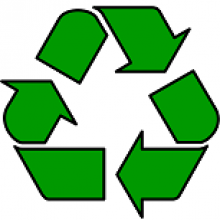
27:36 - Quest for the Best Public Information Website
Quest for the Best Public Information Website
with Chris Vallance
Meera - I'm in London with our resident tech expert, Chris Vallance. Chris, we haven't heard from you in a while, how have you been?
Chris V: I've been fine. I've been checking out a few government competitions.
Meera - Government competitions that could help us find a loo when out on the town, is that right?
Chris V: Yes. It's that age-old problem. You're running round town and you just can't find a public loo. Believe it or not that kind of information is public data. It's public information. Often public information can either be quite dull - you have to look through tables of stuff - or it can be really hard to find. A group called the Power of Information Task Force, which is a government set up group, ran a competition. If you like, it's an X-factor for government information. What they did was invited the public to come up with new information services, new ways of displaying government data and got the public to vote on the suggestions they liked best. The short list contains some pretty interesting suggestions. First of all there was the Loo-Finder which was a service which would enable you to find a public toilet near you. There was the location of postboxes. Another thing that would show you the location of cycle paths and something else that would show you school catchment areas. I think that's quite an interesting thing because you'd think it would be easy to find out where your school catchment area is. In fact it's surprisingly hard. There were a few suggestions that didn't make the cut into the final as well. A particular favourite of mine was one called Babyblob which would show you the average weight of babies born in a particular part of the country. I don't know why! It looked like a really fun idea. Lots of interesting ideas but it's those five that are going to get some development funding. You're likely to see those actually becoming reality in a while.
Meera - With some of those, like you say, the catchment areas and also the one that shows you cycle paths: you'd think they would already be available.
Chris V: I think that's one of the issues coming out of this. It does show how much public information of a quite basic sort can be quite hard to find. That's a question I put to the Cabinet Office minister responsible for the competition, Tom Watson. I asked if, basically, wasn't this an admission that public information hadn't been easy to get hold of.
Tom Watson: I think it's an admission that in the modern age there's been a huge increase in capacity to process data, even in the last few years. I f you look when the government were elected in 1997 10% of people had heard of a thing called the internet. Now 2/3 of us have broadband connections. We're much more used to crunching up data, doing clever things with information. The mash-up community out there are leading the way on this and I think it's entirely appropriate that the government talk to them, learn from their skills, their cutting-edge design ideas and turn it into good public services that people want.
Chris V: That was Cabinet Office minister Tom Watson.
Meera - Who was the winner of this competition?
Chris V: Well, I didn't give it away earlier. Astute listeners may have noticed I only mentioned four of the shortlisted five. That's because the actual winner was one of the shortlisted ones. It was called Can I Recycle It? The idea is that you would type in your  postcode. If you've got something and you don't know where you can recycle it this website will tell you the answer, hopefully. It's all created by a trainee barrister, a chap called Adam Temple. He told me about why he came up with this idea.
postcode. If you've got something and you don't know where you can recycle it this website will tell you the answer, hopefully. It's all created by a trainee barrister, a chap called Adam Temple. He told me about why he came up with this idea.
Adam Temple: When I wanted to throw something away myself and didn't know whether to recycle it or not my own council's website wouldn't tell me. I wanted a website that would tell you specifically, for any individual piece of rubbish, whether you could recycle it or not.
Chris V: And that was Adam Temple, whose idea 'Can I Recycle It?' was the overall winner of the government's 'Show us a way' competition.
Meera - Thanks to things like this competition is this an area that the government is increasingly becoming interested in then?
Chris V: I think very much so. We're sat here outside the coffee shop in central London. I could get my phone out and look up the postcode we're in. I could plug that in and find out who the local MP is through a site called 'they work for you.' I could find out if there was something wrong with the pavements I could complain about it through a site called 'fix my street.' These are all sites created by third parties. The government itself is very interested in harnessing some of this technology. There was recently a big conference that brought together people from government departments. It brought together media and academic departments and net visionaries, if you like, working in this space. It was called the eDemocracy conference. It was chaired by Dan Jellinek, a journalist and writer on government's use of IT. I spoke to Dan and asked him what government departments are actually doing it by way of using this new technology.
Dan - Well they are beginning to cotton on. They've noticed and have started to hear about sites like Facebook and initially Whitehall being Whitehall and quite conservative they haven't really felt happy engaging with these places. They've begun to notice that the numbers of people using them are very large. These are people that they do need to reach. For example, if there's an online community with lots of mothers on it. There may be 15,000 or 20,000 mothers all talking about something the government wants to give advice on; if all those people were in one physical place like a football stadium for a big event the government would want to be there. They'd want to have a little stand giving out leaflets. So, if they're all on the internet the government should go there and get involved where those people actually are.
Chris V: That was Dan Jellinek. I think this is going to be a growth area. We're going to see more of this kind of interactive tool in the coming years, people realising how much data's out there. It won't just be about finding the nearest available public toilet.
Why do trees lose their leaves in temperate climates?
Kat - The only trees that lose their leaves are deciduous trees. They're different from coniferous trees. The reason they do this mainly is because leaves fulfil an interesting function for trees. Not only do they help them produce energy from photosynthesis, that's where the pigments live that help trees to make energy from sunlight from carbon dioxide and water but also they act as the tree's disposal system. Throughout the year the tree will grow, produce energy, sugars and all sorts of things in its leaves and its waste products get put back into the leaves. Now very Autumn, basically because trees do need a lot of water, they start to have a less reliable supply of water, less light so the trees decide ok, now is the time to get rid of our leaves. They lose them and it's basically tress are getting rid of their waste products. It's also why they're changing in colour as well because these waste products are different colours to the green chlorophyll pigment that helps them to make energy. Basically, deciduous trees will lose their energy in this way but coniferous trees so pine trees: all these things with little needles, they don't produce energy in quite the same way. They also don't have this need for water. They have thin, very thin leaves that lose less water and they have a very waxy cuticle on them. Deciduous trees are basically throwing out the garbage when they get rid of their leaves. Chris - i did also hear there's quite a clever trick that researchers at Colgate University in the US discovered that acer trees also use this as the tree equivalent of chemical warfare. They pump into their leaves various toxins, which when the leaves fall to the ground, suppress the growth of other plants and things that would normally grow in the ground. This means that when their seeds try and germinate they have much less competition. The researchers who did this showed that they could kill lettuce plants with the leaf extract from these trees. You could say that when it comes to giving their offspring a fighting chance they've got an ace up their leaves.
Why do objects in the distance appear to converge?
Chris - If you see two railway track in the distance they seem to come to a point. The same thing happens with sunlight - these corpuscular rays or "God's fingers", coming through the clouds they also seem to be coming from a focal point just beyond the clouds. Why is that? Dave - This is all to do with geometry. How big something looks on the back of your eye is to do with how big of an angle it takes up in front of you. If two things are a very small angle apart then they're going to look very close together in the back of your eye. If there's a big angle then it's going to use more of your retina so they'll look bigger. How do you make that angle? It's all geometry done at school. If you imagine a big triangle with one side how far away something is and then a right angle between how far apart the two objects are. The farther away something is, the smaller angle they're going to make between the two of them. The smaller they're going to be on the back of your eyes. The reason why railway tracks look as if they're getting closer together is that they're a metre apart closer to you and a metre apart a mile away but the angle it makes closer to you is much larger than a metre will make a long way away from you. Chris - Why do you think the visual system doesn't compensate and tell us that things are just the same distance apart, even though they might be getting smaller?
Dave - I think your visual system does, to some extent, compensate because the moon looks different sizes depending on how high it is in the sky. If it's right on the horizon or it's near objects you think are much farther away you think it's much bigger than when it's up in the sky. You have no concept of how far away it is so you think it's smaller which is how you get this optical illusion that the moon looks huge on the horizon but tiny up in the sky.
Why does tea taste different when it’s cold?
Chris - Great question. I think there are probably three, possibly four reasons for this. The principle reason is the temperature. When you take food and drink into your mouth what we call taste is large down to smell. You can prove this yourself. If you take something strongly flavoured into your mouth and then hold your nose you'll notice that it appears to lose most of its taste. That's because when you put warm things or things that are cold into your mouth the heat in your mouth volatilises, in other words, turns into vapour some of the volatile chemicals in the food. They then drift up the back of your nose into your nasopharynx where they dock with chemical receptors in what's called your olfactory epithelium. That's where you smell. This tells the brain that particular flavours are present. Most of the food we eat we actually experience the taste as a smell. When you put cold tea into your mouth the temperature means that many of the volatile chemicals that are in the tea don't escape the tea in the same way or at the same rate that they would do with hot tea. The more energy that these chemicals are given the more of them will be driven off. This means that as a result less stimulation goes into the olfactory epithelium so the taste is less strong for some chemicals than others. The tea tastes different. The second point is that when tea's cold the viscosity is very different. It's a thicker fluid than when it's hotter. This means that the stimulation into your mouth and tongue is a bit different. So it tastes and feels different in the mouth which also changes your perception of the flavour of the tea. Then there's another possibility and that's when tea has stood for a long time and gets cold it has separated out according to density of the different components of the tea. If you have got a hot cup of tea you have thermal activity in the fluid so hot things are rising to the top and cold fluid is going to the bottom. This keeps the contents mixed. When you have a tea cup standing there for a long time and the temperature's fallen then it stops mixing like this and things get separated out. The fatty, less dense things go to the top and the more dense things go to the bottom. The mouthful of tea you get isn't a mixture of tea like it would have been before when it was hot.
How does a Yagi aerial work?
Dave - A Yagi aerial is the sort of thing you see, TV aerials, basically. The ones where you've got a long bit pointing towards the transmitter and lots of cross bars along it. Kat - So a typical TV aerial.
Chris - Dave, why are they that shape?
Dave - What's going on here is the idea of an aerial like this is to make the aerial very directional. It'll only pick up signals from the direction of the transmitter and not pick up all the interference from all the other directions. Basically, radio waves are a form of electromagnetic wave. If they hit metal they'll make and electric current flow backwards and forwards along it. The bars on the aerial, when the radio waves hit it electricity sloshed backwards and forwards along it. That electricity sloshing backwards and forwards starts to transmit itself. It makes its own radio waves. You've got a whole series of these all absorbing radio waves and then re-emitting them again and again. The only direction whereby all the radio waves are re emitted by these little segments - the only direction where they all add up and increase the direction of the signal is in the direction along the bar, towards the tv transmitter. The signal gets bigger and bigger and you get a little detector at the back which detects that signal and sends it down to your tv. Quite often at the back they've got a little reflector so it reflects any signal that doesn't get absorbed by the sensor at the back. Chris - Why is it called a Yagi aerial?
Dave - I think it was invented by a Japanese guy called Yagi.

What's the natural way of severing the umbilical cord?
Kat - The animal way is not very pleasant: they chew it off! Nice sharp teeth, chew it off. This is because many animals, in fact the mother, after birth will eat the placenta. The [umbilicus] is not actually attached to the mother, it's attached to the placenta. The placenta's full of lots of goodies. If you're an animal you probably don't want it to go to waste.
Chris - It's the one piece of meat a vegetarian can eat without harming anybody!
What makes us itch?
Chris - Well it's things which tickle your skin but how does that itch reach consciousness? It looks like there are itch-specific classes of nerve fibres. They're very tiny, thin calibre nerve fibres. They're about 1-6 microns (that's millionths of a metre across) so some of the tiniest nerve fibres in the body. If you stimulate those nerve fibres then people do detect a sensation of itch. They seem to be there specifically to convey the sensation that something is tickling you and they go up to the spinal cord and they squirt out a chemical transmitter called gastrin-receptor releasing peptide which is the transmitter which tells the spinal cord there's an itch in a certain part of the body. The purpose of itching is in fact to protect you because things that are usually chemical irritants, physical irritants or parasites. Things like mosquitoes that might transmit an infection to you so it's important you know where on the body there's a problem. It draws attention to it so you can scratch and get rid of it. How does scratching work? In the same way that you punch the wall, go ouch and then rub the affected body part better this helps to gate the pain and stops things hurting so much. When you scratch an itch what you're doing is inflicting a little bit of pain. What scientists have found is that when you trigger a bit of pain in the area where you have an itch that gates or switches off the itch sensation.

42:52 - Would a helium balloon float on the moon?
Would a helium balloon float on the moon?
We put this to Phil Rosenberg of the MET Office, Facility for Airborne Atmospheric Measurement
As far as the balloon's concerned you need two things to make a balloon float. First you need an atmosphere for it to float in. The second thing you need is gravity. That's because the reason why a balloon floats is that the balloon itself is less dense than the air around it so gravity pulls on the air around it more than the balloon. The air around it actually tries to push underneath the balloon. That forces the balloon up and makes it float. Unfortunately the moon hasn't got an atmosphere at all. Therefore you're missing one of the two things that you need to make a balloon float. In that case a balloon on the moon wouldn't float at all. It would just land on the floor. However, that doesn't mean you can't have balloons or other bodies in space at all. Actually the Russians launched a space mission in the 80s called Vega. That involves putting a balloon in the atmosphere of Venus which is the second-closest planet to the sun. Balloons in space are possible and have been done in the past. Looking to the future there's a possibility we might be looking at putting balloons on titan which is one of Saturn's moons. Titan has got an atmosphere and it's really cold there. There's obviously gravity there. Therefore you've got all the things you might need to have a balloon on Titan. The reason to do that would be to have atmospheric instruments that you would hang from the bottom of the balloon and they would measure Titan's atmosphere. That's exactly what we've done on Venus with the Vega mission. So unfortunately no balloons on the moon but they do have uses elsewhere in the solar system. Not just on the Earth.
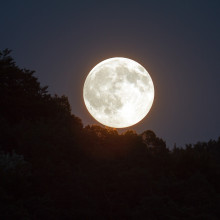
Why doesn’t the moon have a magnetic field?
Chris Smith answered this question...
Chris - That's a very good question. It's all to do with where the moon comes from.
If you look at the composition of the moon - and we know what the moon's made of because one of the people we just heard mentioned, Neil Armstrong, was there and scientists have brought back bits of the moon's surface - it's largely made of the same stuff as the Earth's crust.
Where did it come from? Scientists have pieced back together a theoretical model of how the moon could have been made. The moon's relatively big relative to the Earth. It's much bigger than most moons are. What scientists think is that around about the time when the Earth was first forming, about 4.5 billion years ago when the solar system was very young, two planets - the Earth and a second planet, which is notionally called Thea, ended up on a planetary collision course.
They had the planetary equivalent of an RTA. The two ran into each other and the massive catastrophic collision that ensued meant that a lot of debris from the crust of those planets got ejected like a cocoon around the Earth and this other planet, and the cores of those two planets merged together.
What you ended up with is one bigger planet with a very dense iron core and this cocoon of very "crusty" material round the outside, which then slowly settled just like the planets formed in the first place to form a moon, which was all that debris aggregating in orbit around what was then the Earth.
The core of the Earth has got a lot of iron in it. It's a mobile iron core and we think that's the ingredient you need to create a magnetic field. The moon being a bit smaller, colder, smaller and made principally of crust material doesn't have that iron core that's liquid, spinning around making that magnetic dynamo effect, and therefore doesn't have that magnetic field.
If we didn't have that magnetic field on Earth we would largely resemble Mars: a dried out prune of a planet because our magnetic field helps to deflect off the solar wind.
Dave - Also the moon being so much smaller than the Earth lost its heat a lot quicker. It's entirely solid all the way through, so you don't get this molten conducting metallic core which you need to create a strong magnetic field like the Earth has.
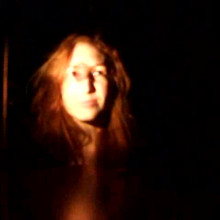










Comments
Add a comment